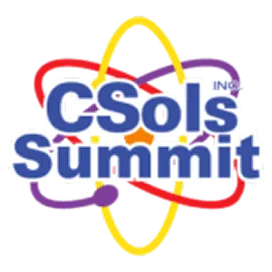Situation
A large pharmaceutical company had a LIMS in place for their largest sites and wanted a solution to harmonize all of the smaller sites, some of which had no LIMS and some that had an older LIMS that lacked support. An internal team conducted a full product selection process, including software demonstrations from vendors based on the client's user requirements. The STARLIMS solution was selected for its flexibility and, not insignificantly, because the client already had multiple years of STARLIMS expertise as a result of a recent merger with another company's consumer health business. Therefore, it was a natural choice to have CSols perform this STARLIMS implementation.
Objectives and Challenges
The objective of this work was to provide the client's smaller sites with a simplified STARLIMS application to support both the pharmaceutical and consumer health businesses and manufacturing processes. STARLIMS would replace an older LIMS that lacked support and harmonize the smaller sites. The implementation team needed to roll out the application to two sites every six months. The client's current system had been taking too much time for evaluation and identification of the root cause of production defects. Extracting the necessary data could take as long as 3 hours.
The client also wanted the static data segregated by site to help support the sale of individual sites in the future after any potential mergers or acquisitions. The technical design for that request was done by CSols, ensuring that the system remained a global one and that, if need be, all the data for a specific site could be extracted, scrubbed from the production database, and moved somewhere else.
Many challenges were faced in completing the first two of the four sites, including support for printing of certificates of analysis (CoAs) in multiple languages, instrument interfacing, customer base data loading, training, and validating two production environments (for the pharmaceutical and consumer health business units). After the successful implementation at the first two sites, the client wanted to build an interface with SAP for batch creation and usage decision reporting and to develop a packaging material test module. This added a layer of complexity.
CSols' Role in the Solution
The CSols technical consultant created the user requirements specification (URS) and completed a gap analysis for the proposed system based on the URS. Any data migration from older systems to STARLIMS was also done by the CSols consultant. Four environments were created in STARLIMS to facilitate the implementation: development, validation, production, and sandbox, with design specifications for each. The CSols resource acted as the technical lead for all aspects of the STARLIMS implementation and configured the system to meet the URS by creating calculations and adjusting modules and dashboards.
After go-live, the CSols consultant traveled to individual sites to provide training and hypercare support. New modules or functionality were also evaluated and planned, e.g., Stability module, Environmental monitoring, SAP interface, new reports, KPIs, etc.
A custom continuous process validation (CPV) module was developed that used moving ranges, Nelson rules, and other statistical calculations, in which users could search using criteria such as the manufacturing date or product number. The search results can be filtered and records excluded by categories such as material code, analyte, or manufacturing date. Once a user is satisfied with the dataset, the statistical information for moving ranges and normal probabilities can be shown in graphs. This allowed the client to quickly find trends with production issues.
The CSols technical resource was also responsible for runtime upgrades to the system. Using the sandbox, the team was able to assess the impact of the upgrade and plan accordingly. The upgrade plan would highlight modifications that needed to be reapplied and identify with the client's BA the regression script to run. If no regression scripts were available, the appropriate regression testing document was written; for example, for the interface with SAP.
Benefits
The client received a state-of-the-art system that replaced older software and, in some cases, a mix of spreadsheets and paper. With the batches being created directly from SAP, the turnaround for testing was improved.
The process of identifying the root cause of production defects, which had previously taken as long as three hours, was significantly improved. The CPV module that the CSols consultant developed brought the process down to as little as 30 minutes. This was a major reason for implementing STARLIMS at the smaller sites.
Improvements to the environmental monitoring module including scanning all the rooms and developing a point-and-click interface allowed users to define a sampling point directly on the map.
To support the production labs, CSols developed a Lab ePlanning tool.
- The tool interfaced with Outlook to plan analysts' work based on their availabilities (by a scan of the Outlook calendar) and their roles, task definitions, and other parameters.
- Touch-screen displays were installed in the labs for access to the ePlanning tool, replacing the traditional whiteboard meetings. Managers could drag and drop tasks from one day to another using their fingers.
- Big-screen monitors in the labs showed the various states that testing tasks were in, using different colors for the status and percent completion. Various key performance indicators were also available to track lab performance.
Learn more about this project by downloading the full STARLIMS case study.
Return to the main case study page to view more STARLIMS projects that CSols has worked on.




Comments